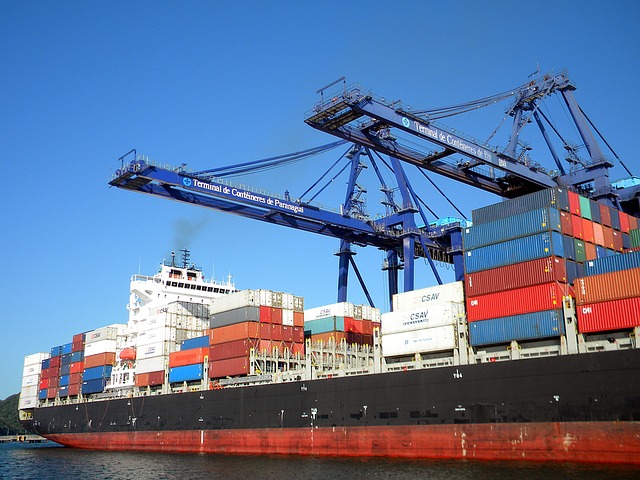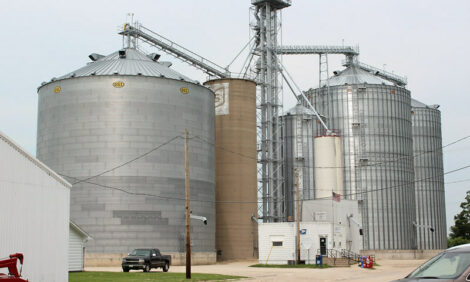



Weekly global protein digest: China demand remains key driver
Following are the latest developments on the world protein front.US beef net sales of 13,400 MT reported for 2020 were down 55 percent from the previous week and 35 percent from the prior 4-week average. Increases primarily for Japan (4,600 MT, including decreases of 600 MT), South Korea (3,200 MT, including decreases of 400 MT), Canada (1,200 MT, including decreases of 100 MT), Taiwan (1,100 MT, including decreases 100 MT), and Indonesia (900 MT), were offset by reductions primarily for Chile (100 MT). For 2021, net sales of 1,700 MT were primarily for Mexico. Exports of 17,600 MT were down 4 percent from the previous week, but up 8 percent from the prior 4-week average. The destinations were primarily to South Korea (5,600 MT), Japan (4,900 MT), Taiwan (1,800 MT), Canada (1,200 MT), and Mexico (1,100 MT).
Global food prices climbing
World food prices rose for a second month in a row, according to the Food and Agriculture Organization (FAO) of the United Nations. The FAO reported its food price index climbed 1.1 points (1.2 percent) from June to an average of 94.2 points in July. That’s also up nearly 1 point (1.0 percent) from year-ago. FAO said, “Similar to June, further increases in the prices of vegetable oils, dairy products and sugar outweighed lower prices in the meat markets amid overall steady value of the cereal price index.”

FAO lowered its global cereal production forecast for 2020 by 9.3 million metric tonnes (MT) to a still-record 2.790 billion MT. It expects global wheat production to account for 761.5 million MT of that tally, which is up 3.2 million MT from its forecast last month and in line with last year’s above-average production. The increase was primarily driven by a jump in its Australian wheat production forecast, with widespread rain and favourable forecasts expected to boost yields.
USDA’s European dairy market overview
The US Department of Agriculture last week issued its European dairy market overview, which follows.
Western overview
Dairy industry contacts in Western Europe comment on feed costs being quite reasonable now. With recent rain helping bolster pastures, confidence is increasing in dairy production increases moving forward.
EU milk production during May 2020 was 0.4 percent higher than May 2019, according to Eurostat. January – May 2020 milk production was reported as 1.3 percent higher than January – May 2019.
Looking at some of the primary Western European milk producing countries January – May 2020 compared with January – May 2019, the percentage changes are Germany, +1.1 percent; France, +0.9 percent; Netherlands, +2.4 percent; Italy, +3.1 percent; and United Kingdom, +0.9 percent, according to CLAL data provided to USDA.
Cheese markets are stable in Western Europe. Retail cheese sales are very good. Orders are generally consistent, which is helpful to manufacturers. Export orders on the books are being satisfied. Many anticipated contracts for later in 2020 remain in negotiation. There is a divergence among cheese plants as to how ageing stocks are viewed. Some plants report stocks are sufficient while other plants describe ageing stocks as low.
EU cheese production during May 2020 was 2.2 percent lower than May 2019, according to Eurostat. In some of the primary Western European cheese producing countries January – May 2020 compared with January – March 2019, the percentage changes are Germany, +2.5 percent; France, -0.8 percent; Netherlands, -3.0 percent; Italy, -0.3 percent; and United Kingdom, +0.1 percent, according to CLAL data provided to USDA.
EU cheese exports January – May 2020, 525,811 MT, decreased 3.7 percent from January – May 2019, according to Eucolait. The main export destinations for the first third of 2020, quantity, and percent of the total, were the UK, 138,047 MT, 31.9 percent; the United States, 38,165 MT, 8.8 percent; and Japan, 35,110 MT, 8.1 percent.
Eastern overview
Milk production in Poland during May 2020 was 1.8 percent higher than May 2019, according to Eurostat. January – May 2020 milk production was reported as 1.7 percent higher than January – May 2019. Production of some dairy commodities in Poland January – May 2020 compared with January – March 2019, are cheese, +4.4 percent; butter, 10.2 percent; SMP, -1.7 percent; and WMP, -0.1 percent, according to CLAL data provided to USDA.
Milk production in the Czech Republic during May 2020 was 3.7 percent higher than May 2019, according to Eurostat. January – May 2020 milk production was reported as 4.5 percent higher than January – May 2019. Production of some dairy commodities in the Czech Republic January – May 2020 compared with January – March 2019, are cheese, +8.7 percent; butter, 3.3 percent; SMP, +8.3 percent; and WMP, -9.1 percent, according to CLAL data provided to USDA.
USDA quarterly meat report: growth in meat imports driven by China
In July the US Department of Agriculture (USDA) issued its quarterly meat report. USDA said demand for imported meat in China remains incredibly strong as the protein deficit caused by African swine fever (ASF) continues to drive trade. Despite headwinds caused by COVID-19 and disruptions to the economy and foodservice, demand growth during the first 5 months of the year exceeded expectations. As a result, forecasts for pork, beef, and chicken meat imports are all revised upward. China continues to increase its share of the global market, accounting for over 43 percent of global pork imports and 29 percent of beef. Altogether, China now accounts for 28 percent of imports by major traders, up from 20 percent in 2019. Despite rising imports and growing production of chicken and beef, total meat consumption is expected to decline 4 percent this year.

Beef
The global beef production forecast for 2020 is revised down 1 percent from the prior forecast on lower-than-expected slaughter in Brazil, China, and North America. Temporary processing disruptions resulted in lower production forecasts for Canada and the United States, while year-over-year growth in China beef production is revised down in the face of stiff import competition. Meanwhile, depressed domestic beef demand and lower cattle prices in Brazil are causing producers to delay slaughter.
The global beef export forecast for 2020 is unchanged at 10.7 million tonnes. Estimates for Argentina, Brazil, the European Union, and Mexico are revised higher while those for Canada and the United States are revised lower. Gains for both Argentina and Brazil reflect weak currencies and strong Chinese demand. Furthermore, the current economic environment has limited domestic beef demand, increasing exportable supplies. During 2020, Argentina and Brazil are expected to export 25 and 26 percent of their respective beef production. For Brazil, this is a record high while for Argentina it is the highest proportion since the 1970s. Meanwhile, Canada and US exports are revised lower on temporary processing disruptions and weaker demand from major buyers.
Read the chicken meat outlook on The Poultry Site and the pork outlook on The Pig Site.
--Words by Jim Wyckoff



